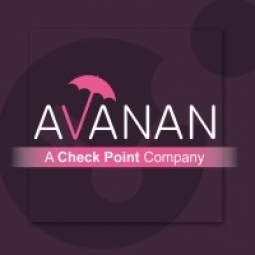公司规模
Mid-size Company
地区
- America
国家
- United States
产品
- Avanan
- Microsoft ATP
- Check Point Harmony Email & Collaboration
技术栈
- Microsoft 365
- API
实施规模
- Enterprise-wide Deployment
影响指标
- Customer Satisfaction
技术
- 网络安全和隐私 - 云安全
- 网络安全和隐私 - 数据库安全
适用功能
- 商业运营
用例
- 网络安全
- 欺诈识别
服务
- 云规划/设计/实施服务
- 网络安全服务
关于客户
New Destination Travel is a large travel agency in the Southwest. The company's IT Department is run by John Roy. For years, the company relied on Microsoft ATP for security in its Microsoft 365 environment. However, they were troubled by how many phishing attacks reached the inbox. Day after day, a new campaign was visible to users. Beyond that, they needed a better way to search and quarantine or destroy messages. With Microsoft, the process was clunky. As a busy IT admin, Roy needed a simple, fast, and effective solution. Finally, Roy needed a better inbound and outbound DLP solution. As a travel agency, they deal with a lot of credit card numbers to book their customers’ travel. That means they need to be extra careful in ensuring those numbers don’t get into the wrong hands.
挑战
New Destination Travel was looking to upgrade its Microsoft ATP environment. They were specifically interested in a higher catch rate of phishing, DLP and full-suite protection. For years, the company relied on Microsoft ATP for security in its Microsoft 365 environment. However, they were troubled by how many phishing attacks reached the inbox. Day after day, a new campaign was visible to users. Beyond that, they needed a better way to search and quarantine or destroy messages. With Microsoft, the process was clunky. As a busy IT admin, Roy needed a simple, fast, and effective solution. Finally, Roy needed a better inbound and outbound DLP solution. As a travel agency, they deal with a lot of credit card numbers to book their customers’ travel. That means they need to be extra careful in ensuring those numbers don’t get into the wrong hands.
解决方案
John Roy evaluated phishing protection solutions and looked at Proofpoint, Mimecast and Avanan. He did trials with each, and he saw that the legacy options, Proofpoint and Mimecast, let far too many emails into the inbox. He saw how effective Avanan was, and really enjoyed the API approach to email security. That led Roy to take a look at some other API solutions, like Armorblox and Abnormal. However, these API solutions work differently than Avanan. Avanan connects via API and can stop malicious emails before they reach the inbox. Though the others connect via API as well, they can only remove emails after they reach the inbox. For Roy, this wasn’t good enough. He was mainly looking for an inbound DLP solution. Most DLP solutions prevent outbound leakage—for example, a social security number or health record leaving the organization. But since customers hand over credit card details regularly to New Destination, they needed to ensure that those card numbers stayed protected. Working with the Avanan team, Roy created a custom inbound DLP policy. He appreciated the collaboration to develop a solution that fit his organization’s exact needs. All of this led Roy to a no-brainer choice in Avanan.
运营影响
数量效益

Case Study missing?
Start adding your own!
Register with your work email and create a new case study profile for your business.
相关案例.

Case Study
Enel Secures Italian Power Generation Network
Electric energy operators around the world are working to increase the reliability and cyber resiliency of their systems. This includes Enel, a global power company that manages and monitors the Italian power grid. This grid:• Serves 31 million customers• Has a net installed energy capacity exceeding 31 gigawatts• Includes more than 500 power generation plants,including hydroelectric, thermoelectric, and wind• Is managed and monitored by Enel 24/7/365• Is operated by Terna, the Italian Transmission System Operator (TSO)Enel is responsible for the availability of the grid’s underlying ICS and industrial network. It also manages Regional Control Centers and Interconnection Centers which connect with the TSO. The TSO manages the flow of energy to the grid plus controls and remotely regulates the power generation of power plants, increasing and decreasing power production as required. The complex system of interaction and cooperation between Enel and the TSO has strong security implications as well as operational and business challenges.

Case Study
Securing the Connected Car Ecosystem
In-vehicle communications and entertainment system hosts high-value or sensitive applications. API libraries facilitate communication and sharing of vehicle data. These API libraries are vulnerable to reverse engineering and tampering attacks and may even result in loss of passenger safety. Attackers can inject malware that may be able to migrate to other in-car networks such as the controller-area-network (CAN) bus which links to the vehicle’s critical systems. Software provided for dealers to interface with cars through the OBD2 port is vulnerable to reverse engineering and tampering attacks. Hackers may be able to abuse these tools to inject malicious code into the ECUs and CAN bus. Attackers can lift the cryptographic keys used, and use that to build their own rogue apps/software. Their cloned version of the original app/software may have altered functionality, and may intend to gain access to other in-car networks.

Case Study
Secure and Cloud-based Data Marketplace
The great promise of new connected concepts of industry like 'Industry 4.0' is their ability to deliver a historically unparalleled level of responsiveness and flexibility. While modern supply chains are already heavily integrated and designed to be fluid and fast moving, a large swathe of manufacturing still remains beholden to economies of scale, large production runs, and careful preplanning.The Industrial Internet of Things (IIoT) is set to change this by allowing small-batch or even custom manufacturing on a truly industrial scale. With machines whose functions are not set in stone, but flexible and determined by their operating software and with a new form of connectivity bringing industrial engineers, product manufacturers, and end users closer together than ever before. Ad-hoc adjustments to automotive parts, for example, during active product runs or the bespoke manufacturing of custom sneakers become very viable options indeed.Much of this remains a theoretical vision, but IUNO, the German national reference project for IT security in Industry 4.0 demonstrates the new capabilities in action with a secure technology data marketplace running a smart drinks mixer.

Case Study
Expedia Hosted by 2lemetry Through AWS
Expedia is committed to continuous innovation, technology, and platform improvements to create a great experience for its customers. The Expedia Worldwide Engineering (EWE) organization supports all websites under the Expedia brand. Expedia began using Amazon Web Services (AWS) in 2010 to launch Expedia Suggest Service (ESS), a typeahead suggestion service that helps customers enter travel, search, and location information correctly. According to the company’s metrics, an error page is the main reason for site abandonment. Expedia wanted global users to find what they were looking for quickly and without errors. At the time, Expedia operated all its services from data centers in Chandler, AZ. The engineering team realized that they had to run ESS in locations physically close to customers to enable a quick and responsive service with minimal network latency.
.png)
Case Study
OTA Software Updates for Smart Energy (gridX)
gridX has a requirement for over-the-air software updates for their gridBox devices and used the Yocto Project for their builds. The driver for the requirement was having the ability to quickly support new features, as well as deploying bug fixed and path known security vulnerabilities. New software updates with a US stick manually to all gridBox devices in the field would be prohibitively expensive and labor-intensive.

Case Study
Transformed IT Infrastructure Improves Business Agility
A global security, storage, and systems management software provider planned to demerge into two separate companies. To prepare, it undertook a major overhaul of its IT infrastructure and operations strategy. A key requirement: streamlining the Hosting Group, which handled compute, storage, and middleware operations. These functions had grown complex and had a wide geographic distribution. The company planned to bring them under closer in-house management.The company looked to increase its business agility so it could quickly and creatively respond to customer demands with improved internal collaboration and optimized go-to- market and IT service delivery capabilities. Modernizing IT functions, and making them more responsive, was critical to achieving these goals.



